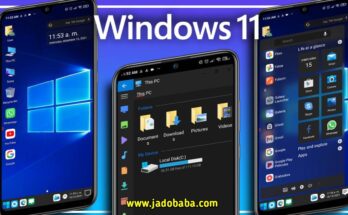Best DSLR Camera App For Mobile . In today’s digital age, the line between professional photography and mobile photography is increasingly blurred. Thanks to significant advancements in smartphone camera technology, achieving DSLR-quality photos with an Android phone is not only possible but also increasingly common. This article explores how you can leverage your Android phone’s capabilities to produce high-quality images that rival those taken with traditional DSLRs, examining key features, techniques, and tools that can elevate your mobile photography. Best DSLR Camera App For Mobile for new user.
The Evolution of Smartphone Cameras
Smartphone cameras have undergone a remarkable transformation over the years. Early models were basic and limited in functionality, but today’s Android phones boast sophisticated camera systems that include high-resolution sensors, multiple lenses, and advanced image processing technologies. These improvements enable smartphones to capture stunning details, vibrant colors, and dynamic range, bringing them closer to the quality traditionally associated with DSLRs. Modern smartphones often feature high-megapixel sensors that deliver sharper images and better low-light performance, alongside multiple lenses such as wide-angle, telephoto, and macro, allowing for versatile shooting options.
Utilizing Manual Controls for DSLR-Like Results
One of the hallmarks of DSLR photography is the ability to manually control various camera settings, and many Android phones now offer similar functionality through their “Pro” or “Manual” modes. These modes allow you to adjust settings such as ISO, shutter speed, and white balance, which are crucial for achieving professional-quality photos. ISO controls the camera’s sensitivity to light; lower ISO values are ideal for bright conditions, producing clearer images with minimal noise, while higher ISO settings are useful in low-light situations but may introduce some grain. Shutter speed determines how long the camera’s shutter remains open, with faster speeds freezing motion and slower speeds capturing motion blur, adding artistic effects. Although smartphone apertures are typically fixed, understanding depth of field and utilizing portrait modes can simulate the shallow focus effects often achieved with DSLRs.

Mastering Composition Techniques
Good composition is essential for creating visually appealing photographs, and applying classic composition principles can enhance your smartphone images significantly. The rule of thirds is a fundamental technique where the image is divided into a 3×3 grid, placing key elements along these lines or their intersections to create a balanced and engaging composition. Leading lines, which guide the viewer’s eye towards the subject, and framing, where natural elements in the scene create a border around the subject, can also enhance your photos. Additionally, experimenting with perspective and angles can add depth and interest to your shots, making them stand out. Best DSLR Camera App For Mobile.
Optimizing Lighting Conditions
Lighting is one of the most critical factors in photography, and mastering it can elevate your smartphone photos to DSLR-quality levels. Natural light is often the best option, and shooting during the golden hours—shortly after sunrise or before sunset—provides soft, flattering light that enhances the overall quality of your images. Harsh midday sunlight can create strong shadows and highlights, so it’s beneficial to shoot in shaded areas or use diffusers to soften the light. Reflectors can also be use to bounce light onto the subject, reducing shadows and providing more even illumination. Understanding how to manipulate and make the most of available light is key to achieving professional-grade results with your Android phone.
Stabilizing Your Shots
Camera shake can undermine the quality of your photos, leading to blurre images and a loss of detail. To counteract this, stabilization is essential. Using a tripod is highly recommende, especially for long exposures or low-light conditions where camera shake is more pronounce. Many smartphones come equipp with optical image stabilization (OIS) or electronic image stabilization (EIS) features that help reduce the effects of camera shake, but a physical tripod or stable surface will often provide the best results. Additionally, enabling the camera’s built-in stabilization features can further enhance image sharpness and clarity.
Leveraging Editing Tools and Apps
Post-processing is a crucial aspect of modern photography, and a variety of apps can help you enhance your smartphone images to achieve DSLR-quality results. Adobe Lightroom Mobile offers advanced editing tools and presets that can fine-tune exposure, contrast, and color balance, allowing for professional-level adjustments. Snapseed, developed by Google, provides selective adjustments and a range of editing features that can enhance specific areas of your photos. For those who prefer manual control over their shooting process, ProCam X offers a suite of features including manual focus and exposure adjustments. VSCO, known for its creative filters, combines both shooting and editing capabilities to give your photos a polishe, professional look. Utilizing these tools effectively can significantly improve the quality of your images and allow you to achieve the desire results.
Exploring Advanced Photography Techniques
Advanced photography techniques that were once exclusive to high-end DSLRs are now accessible to smartphone users. Long exposure photography, which captures motion over time to create effects such as light trails or smooth water surfaces, can be achieved using a tripod and long-exposure apps. Night photography, which involves capturing clear images in low-light conditions, can be enhance with built-in night modes or specialize apps designe for low-light shooting. High Dynamic Range (HDR) photography, which combines multiple exposures to capture a wider range of light and detail, is available on many smartphones, enabling you to achieve balance exposures in scenes with high contrast. These techniques allow smartphone users to explore creative possibilities and produce images with exceptional quality and artistic impact.
The Future of Mobile Photography
Looking ahead, the future of mobile photography promises even greater advancements, with emerging technologies set to further enhance the capabilities of smartphone cameras. Computational photography, which uses algorithms to improve image quality and offer features such as real-time adjustments and enhance effects, is expected to play a significant role in the evolution of mobile photography. AI integration will continue to provide smart enhancements and automated adjustments, simplifying the photography process and improving results. As technology evolves, staying inform about new features and techniques will help you make the most of your smartphone’s camera capabilities and continue to create high-quality images.
Download
Conclusion
Achieving DSLR-quality photography with your Android phone is increasingly achievable thanks to advancements in camera technology and the availability of powerful editing tools. By utilizing manual controls, mastering composition techniques, optimizing lighting conditions, and leveraging advance photography methods, you can produce stunning images that rival those taken with traditional DSLRs. As technology continues to advance, staying informed about new features and techniques will help you make the most of your smartphone’s camera capabilities and continue to create professional-grade photos. Embracing the potential of your Android phone and applying creative techniques will allow you to capture exceptional images, demonstrating that high-quality photography is no longer confine to expensive, high-end equipment.



